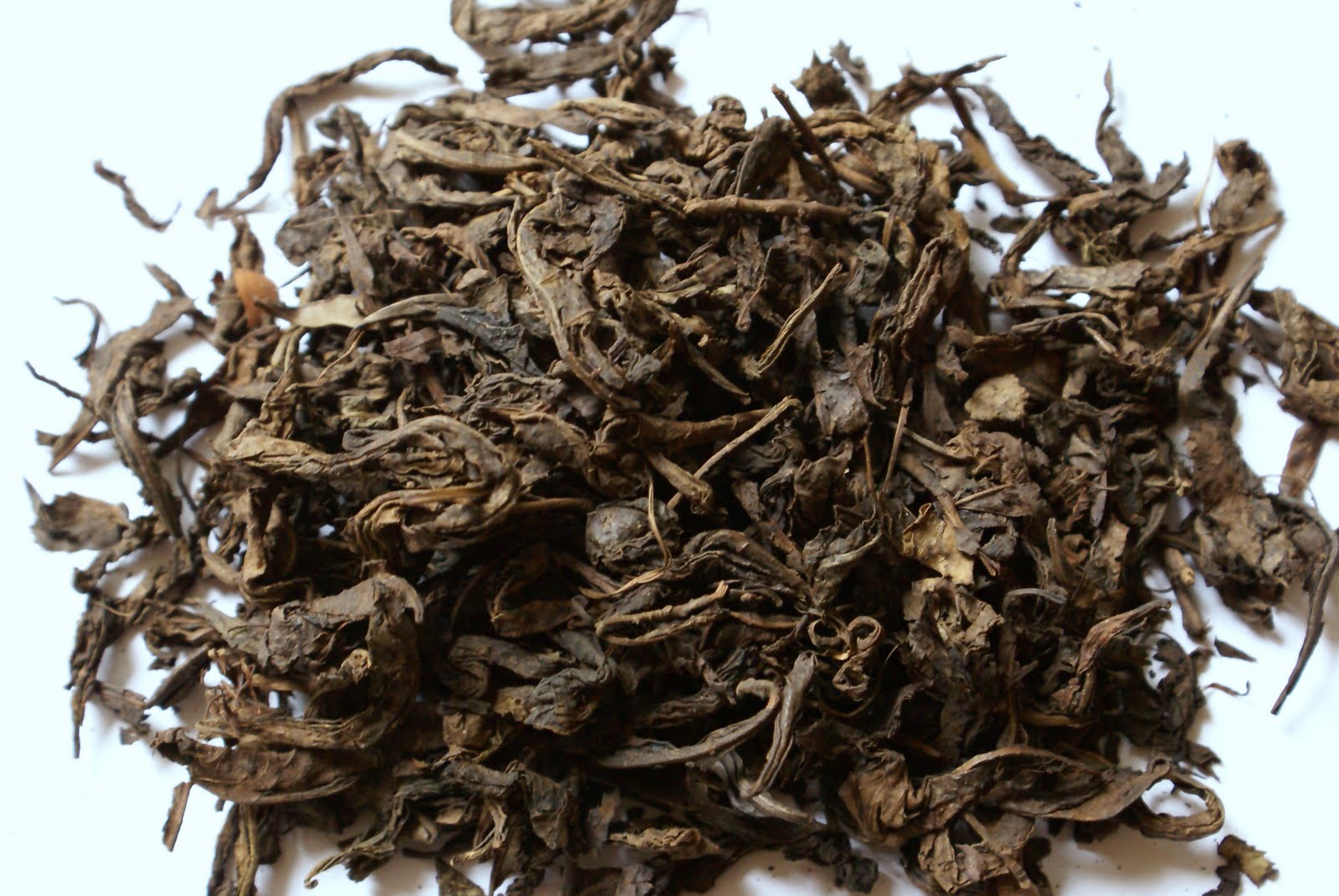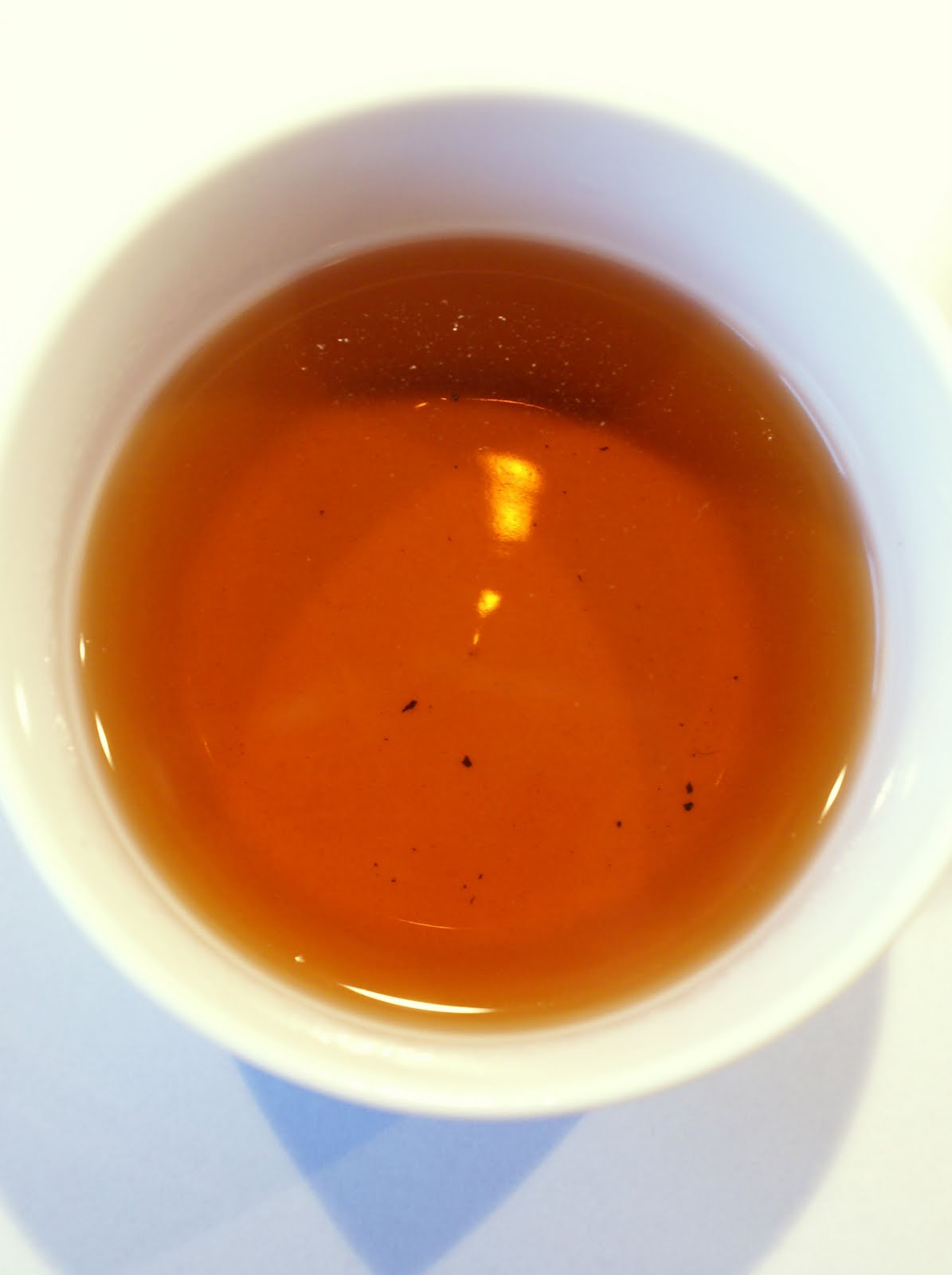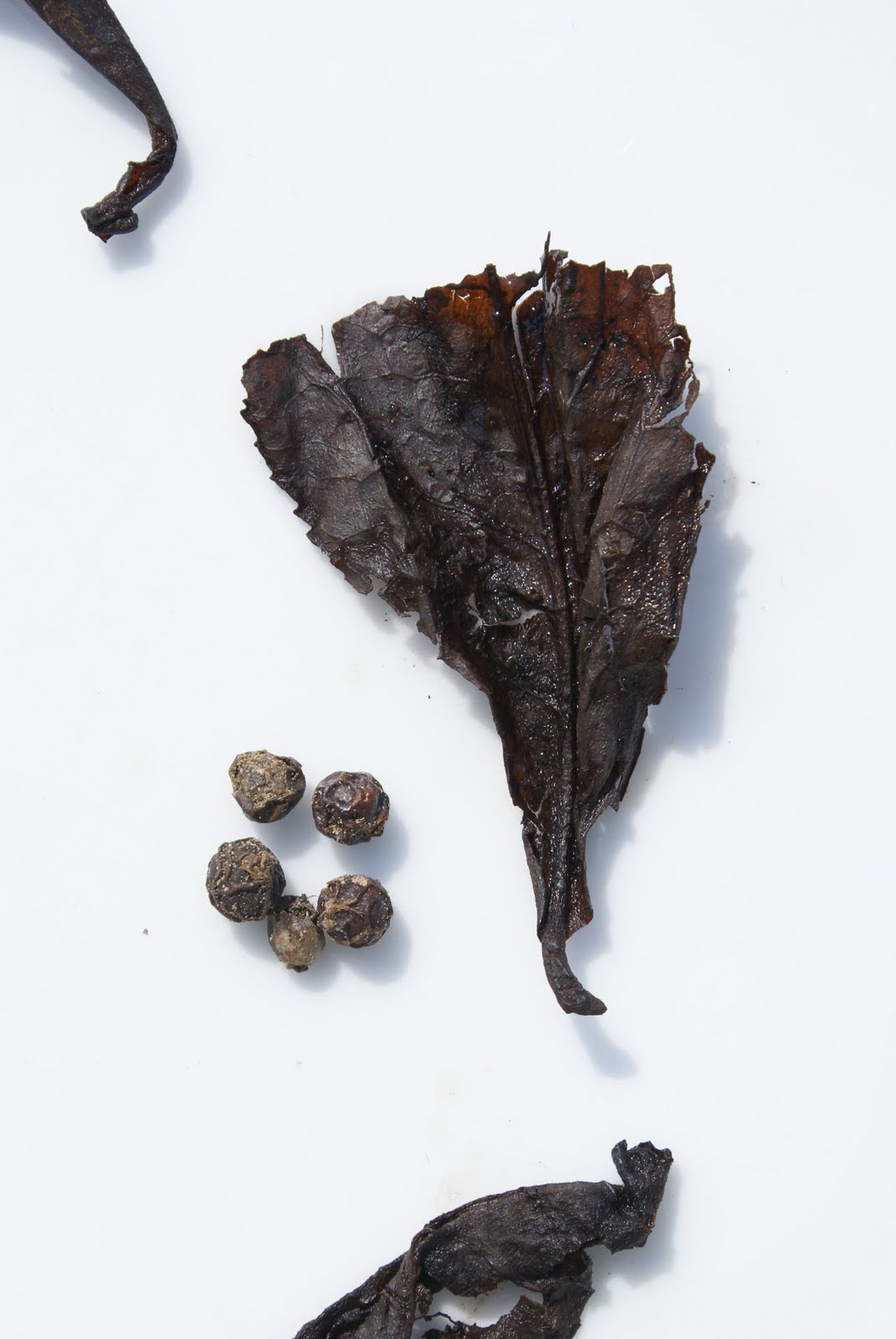1980s Loose Daye
Posted on 26 September 2009
Autumn is slowly arriving here to the Polish lowlands. We’re having a delightful Indian summer with afternoons in the mid-25Cs and no rain, a very positive weather for the Polish grape harvest. But the evenings are fairly chilly and mists are rising steadily at 8pm. It’s the sort of weather that makes my go down to the cellar for two things: sweet Tokaj wine and a bing of ageing puer tea.
Let’s start with the latter. After a summer busy with drinking Japanese green teas it’s a welcome change to move into the world of earthy, mushroomey, spicy puer. I have a number of samples to delve into this autumn and today, I went for the simplest of them all.
This 1980s Daye Loose-Leaf is from NadaCha, and costs the incredibly modic (in the context of its age) sum of £11 per 100g. Nada explains this is made of the largest tea leaves that in the production of ‘proper’ puer, are usually sorted out (though you can see more than a fair amount within the lower-end cake blends, in my experience). Due to their size and position lower down the tea branch they usually have less aroma and less than the young leaves and buds.
This tea is interesting in being so old: you don’t often see a daye [large-leaf] of this age. In its youth it’s a cheap and simple tea for quick consumption. Here we have a variation on the theme.
These leaves live up to their name: they are really large! The colour is a consistent dark brown (not black), with quite some evolution: some leaves are looking almost powdery. They are uniformly thin and look rather fragile. They have a low, subdued aroma with some nice walnutty notes; a moderately pungent shicang [wet-storage] character comes up when the leaves are warmed in the gaiwan.
Competition-style brewing: 2g of leaf / 100ml water / 5 minutes.
The colour of the brew is only a medium brown. This is a surprising tea, showing little wet storage and an interestingly fruity, approachable character. Attack shows that unmistakeable old puer umami fatness, followed by echoes of the nose notes: walnuts, dried fruits (dates perhaps) in a sweet context. Length or huigan are not special but this is a very moreish tea, unchallenging, comfortable, balanced and clean. A really good start to the new puer season! And at this price it’s really recommended.
These leaves are not worthy of very intricate brewing strategies. A couple of attempts in yixing pot brought little extra interest. Now I just put a small amount in a gaiwan and brew almost at will: 2, 5, 8 minutes depending on how many e-mails I’m reading through. There’s no bitterness and the wet storage notes are low so overbrewing is not a problem.




